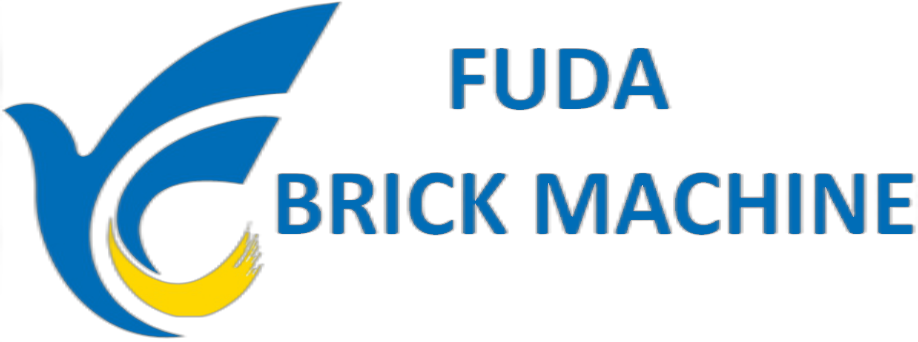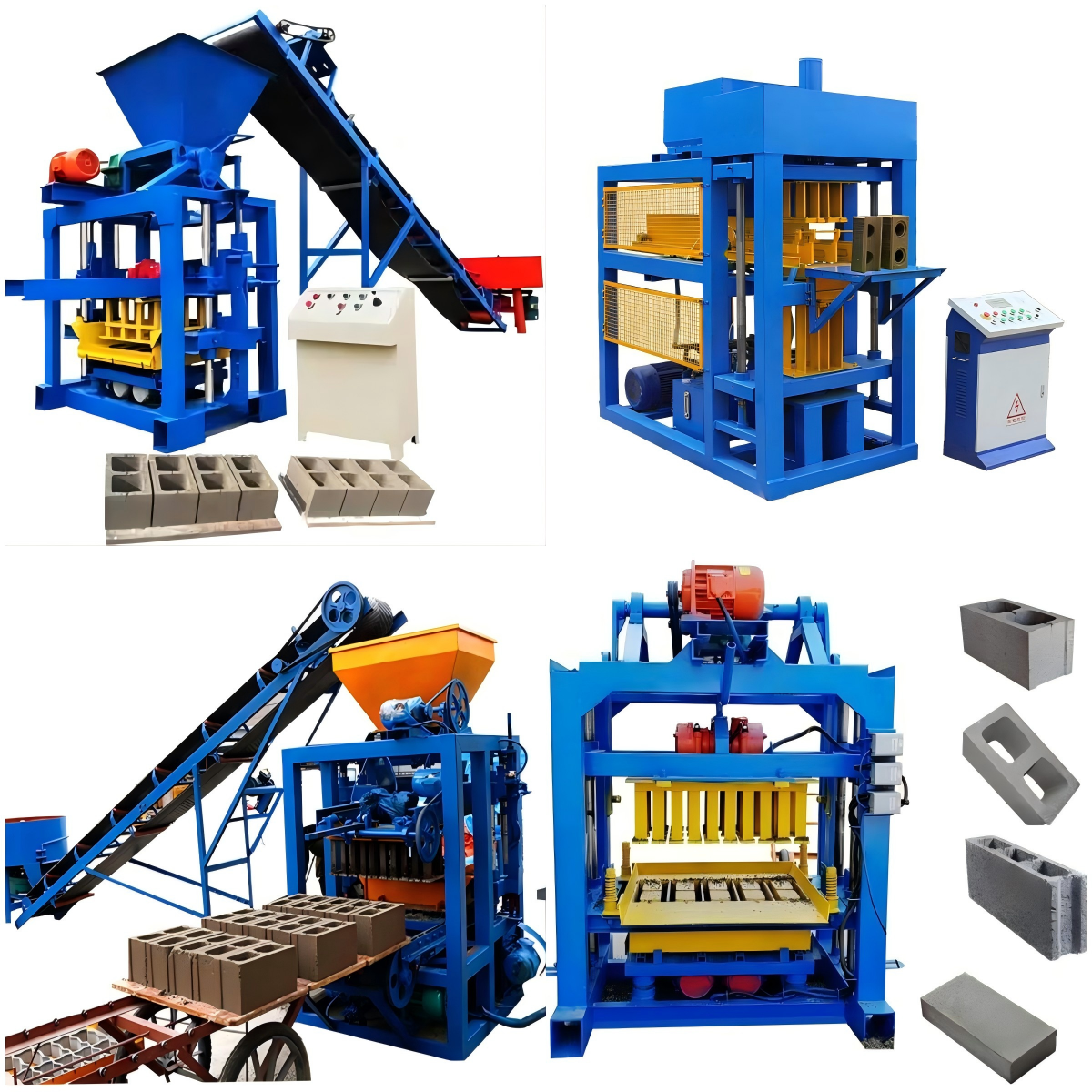زيادة الإنتاجية وكفاءة التشغيل
زيادة كفاءة الإنتاج من خلال الأنظمة شبه الآلية
تُسهِّل ماكينات تصنيع البلوك شبه الآلية من سير الأمور بسلاسة لأنها تتولى المهام المتكررة المملة مثل تغذية القوالب بالخرسانة وملءها، لكنها لا تزال تحتاج إلى وجود البشر لمراقبة الجودة. تؤدي هذه الماكينات بشكل أساسي الأجزاء المرهقة من العمل التي كانت تُنفَّذ يدويًا. أفادت المصانع بأن الإنتاج أصبح أسرع بنسبة تصل إلى 30 بالمئة مقارنة بالعمل اليدوي الكامل، على الرغم من أن النتائج قد تختلف حسب الإعداد. بدلًا من قيام العمال برفع الأحمال الثقيلة، يقضون الآن وقتهم في الجول حول خط الإنتاج لفحص المنتجات فور خروجها. ويقلل هذا من الأخطاء الناتجة عن التعب، وترتفع بالتالي الكمية الإجمالية للإنتاج اليومي في معظم المصانع.
تغيير القوالب بسرعة يقلل من وقت التوقف ويزيد من الإنتاج
تتيح آلات صنع البلوك شبه الأوتوماتيكية تغيير القوالب في غضون 8 إلى 12 دقيقة باستخدام أنظمة تثبيت قياسية. وتمكن التصاميم المعيارية من الانتقال السلس بين الطوب الصلب والبلوك المجوف والطوب المتشابك خلال فترات التشغيل، مما يلغي ساعات التوقف الطويلة. وتدعم هذه المرونة التشغيلية معدلات استخدام للأصول تتجاوز 95%، وفقاً للمعايير الصناعية للخرسانة.
تكنولوجيا الاهتزاز ذات الضغط العالي لإنتاج بلوك أقوى وأكثر كثافة
عادةً ما تولّد أنظمة الاهتزاز في عمليات الصب الحديثة قوة دمج تتراوح بين 6,500 إلى 7,500 رطلاً لكل بوصة مربعة. يساعد هذا المستوى من الضغط حقاً في القضاء على تلك الجيوب الهوائية المزعجة التي يمكن أن تضعف هيكل المنتجات المصبوبة. عندما يستخدم المصنعون ألواح اهتزازية أثناء الإنتاج، فإنهم يحصلون على ربط أفضل بكثير بين الجسيمات في جميع أنحاء المادة. تكون الكتل المنتجة بهذه الطريقة أكثر كثافة بنسبة تتراوح بين 18 إلى 23 بالمائة مقارنة بالطرق اليدوية التقليدية. تجعل الكثافة المتزايدة من هذه الكتل أقل عرضة للتشقق عند نقلها داخل المستودعات أو مواقع العمل. بالإضافة إلى ذلك، أثبتت مقاومتها للزلازل وفقاً للاختبارات التي أجريت بإجراءات ضمان الجودة ISO 9001، وهو ما تشترط عليه مدونات البناء غالباً في الاستخدامات التجارية.
دراسة حالة: زيادة إنتاجية بنسبة 40% في شركة هندية للبناء
قام مورد مقره غوجارات بتطبيق آلات شبه آلية في تجربة استمرت 64 يومًا، مما زاد الإنتاج اليومي من 8,100 إلى 11,300 كتلة. مع تقليل أوقات التبديل وقدرة التشغيل اليومية التي تصل إلى 19 ساعة، ارتفع الإنتاج الشهري من 243,000 إلى 340,000 وحدة. كما انخفضت متطلبات العمالة بنسبة 54٪، مما سمح للشركة بزيادة الإنتاج دون الحاجة للاستثمار في أتمتة كاملة.
جودة الكتل متفوقة وثابتة
هندسة دقيقة تضمن أبعادًا موحدة للكتل
يعتمد صانعو البلوكات شبه الأوتوماتيكية على قوالب دقيقة إلى جانب تقنية الاهتزاز المُعايرة للحفاظ على الأبعاد ضمن حدود ضيقة. البلوكات المنتجة تفي بجميع المواصفات المطلوبة لأعمال البناء، وهو أمر لا يحدث عندما يصنعها الناس يدويًا. الحصول على نتائج متسقة يُعد أمرًا بالغ الأهمية في المشاريع الكبيرة. نحن نتحدث عن جدران يجب أن تظل صامدة لعقود. قد لا يبدو المليمتر هنا أو هناك كبيرًا، لكن هذه الفروقات الصغيرة تتراكم عبر آلاف الوحدات ويمكن أن تؤثر بشكل كبير على استقرار البنية بأكملها على المدى الطويل.
تقلل الضوابط شبه اليدوية من الأخطاء البشرية وتحسّن الاتساق
تقلل الأنظمة شبه الآلية من التباين من خلال التعامل مع مهام مهمة مثل جرعات المواد والضغط تلقائيًا، ولكن لا تزال تتيح للمشغلين إجراء تعديلات على القوالب عند الحاجة. يمكن أن يؤدي الجمع بين الأتمتة والإشراف البشري إلى تقليل هدر المواد بشكل كبير، ربما بنسبة تتراوح بين 25 إلى 30 بالمئة وفقًا لبعض التقارير الصناعية. ما يجعل هذه الأنظمة تعمل بشكل جيد هو أن العمال يمكنهم إجراء فحوصات جودة مباشرة دون الحاجة إلى الالتحاق ببرامج تدريب تقنية مكثفة. هذا يحافظ على اتساق المنتجات العالية مع تجنب المتاعب التي تأتي مع تشغيل خطوط إنتاج تمامًا آلية، والتي تتطلب غالبًا طاقم صيانة متخصص ومعدات متطورة باهظة الثمن.
بيانات صناعية: 98.6% معدل اتساق الكتل في اختبارات مجلة ACI لعام 2023
وبحسب مجلة ACI للمواد لعام 2023، فقد حققت الآلات شبه الآلية اتساقًا يبلغ حوالي 98.6 بالمئة بين عمليات الإنتاج المختلفة. تأتي هذه الآلات مزودة بحساسات تحميل مدمجة مع مثبتات هيدروليكية تقوم بضبط نفسها تلقائيًا عندما تكتشف تغييرات في سمك الخرسانة، مما يحافظ على سير العمليات بسلاسة في معظم الأوقات. المستوى المتميز من الدقة يسمح فعليًا لفرق البناء بتحقيق تفاوتات ضمن نسبة 0.3 بالمئة، مما يجعل هذه الآلات ذات قيمة كبيرة في مشاريع البنية التحتية الكبيرة مثل بناء الجسور أو إنشاء الجدران الاستنادية، حيث يمكن أن تتحول الأخطاء الصغيرة إلى مشكلات مكلفة على المدى الطويل.
وفورات كبيرة في العمالة والتكاليف
الاعتماد المحدود على العمالة دون تحمل التكلفة العالية للتأهيل الكامل للآلات
تقلل ماكينات تصنيع البلوك شبه الآلية من احتياجاتها من العمالة بنسبة تصل إلى 60 بالمائة تقريبًا مقارنة بالعمل اليدوي الكامل. تقوم هذه الماكينات بأداء المهام الشاقة مثل خلط المواد وضغطها في بلوكات، لكنها تترك للمُشغل مهمة التعامل مع القوالب وإجراء فحوصات الجودة النهائية. الآن قارن ذلك مع أنظمة الروبوتات الكاملة التي تأتي بأسعار أعلى بمرتين إلى ثلاث مرات. بالنسبة للشركات الصغيرة أو العمليات المتوسطة التي تعاني من نقص العمالة وتحد من رؤوس الأموال، تمثل هذه الخيارات شبه الآلية قيمة حقيقية دون إحداث أعباء مالية كبيرة.
المدخرات على المدى الطويل: خفض بنسبة 30—40% في تكاليف العمالة على مدى ثلاث سنوات
عندما تتحول الشركات إلى أنظمة شبه آلية، فإنها تلاحظ عادةً انخفاضاً في تكاليف العمالة بنسبة تتراوح بين 30 إلى 40 بالمئة على مدى ثلاث سنوات تقريباً. أين يتم توفير كل هذه الأموال؟ حسناً، يقضى العمال وقتاً أقل في إنتاج كل ألف كتلة، ويكون هناك حاجة أقل لإصلاح الأخطاء لأن النتائج تكون أكثر اتساقاً، ولا يستغرق تدريب الموظفين الجدد وقتاً طويلاً كما كان من قبل. وبحسب بيانات معهد البناء الجاهز (Modular Building Institute)، فإن تكاليف العمالة تشكل عادةً ما بين 45 إلى 55 بالمئة من تكلفة تشغيل معمل كتل تقليدي. وهذا يجعل أي تحسين في الكفاءة ذا تأثير كبير، خاصة في ظل صعوبة الحصول على عمالة جيدة يوماً بعد يوم. وبإضافة حقيقة أن هدر المواد أصبح أقل وحدوث أعطال في الماكينات أصبح أقل تكراراً أيضاً، فإن معظم الشركات تجد أن المبالغ المدخرة تغطي ما تم إنفاقه على شراء المعدات الجديدة خلال فترة تتراوح بين 18 إلى 24 شهراً.
المرونة في إنتاج الكتل ومواد البناء
إنتاج كتل صلبة، مجوفة، متشابكة وزخرفية على آلة واحدة
تدعم آلات صنع الكتل شبه الآلية الاحتياجات البناء المتنوعة من خلال قوالب قابلة للتبديل. يمكن للوحدة الواحدة إنتاج كتل هيكلية صلبة ومجوفة، ووحدات متشابكة للبناء المقاوم للزلازل، وعناصر زخرفية للواجهات. وتستغرق عملية تغيير القوالب أقل من 15 دقيقة، مما يسمح بإعادة التكوين بسرعة لتلبية متطلبات المشاريع المتغيرة.
زيادة الإنتاج ليشمل الألواح الخرسانية، حافة الأرصفة وعناصر البناء الأخرى
وبفضل إعدادات الاهتزاز القابلة للتعديل وإدخالات القوالب المتخصصة، يمكن لهذه الآلات أيضًا تصنيع ألواح تتوافق مع معايير ADA، وأحافات أرصفة مضادة للانزلاق، وطوب تسوير الحدائق. تسمح هذه القدرة متعددة المنتجات للشركات بدمج المعدات وتنفيذ ما يصل إلى 85٪ من متطلبات البناء الطوبية لمشروع بناء نموذجي من خط إنتاج واحد.
التكيف بسهولة مع معايير البناء الإقليمية واتجاهات التصميم
إن القدرة على برمجة ضوابط الضغط وضبط ترددات الاهتزاز تعني أن المصنّعين يستطيعون بسهولة تكييف منتجاتهم لتلبية مختلف المعايير الإقليمية. فكّر في متطلبات ASTM في أمريكا الشمالية مقابل معايير IS في جميع أنحاء الهند. في الواقع، تُعدّل الشركات منتجاتها بناءً على رغبات السكان المحليين. على سبيل المثال، قد تُضيف ألوانًا استوائية زاهية شائعة في أسواق جنوب شرق آسيا، بينما تُنتج خلطات خرسانية مقاومة للصقيع للأماكن التي تنخفض فيها درجات الحرارة في الشتاء إلى ما دون الصفر. هذا النوع من التخصيص يُحافظ على تنافسية الشركات حتى مع تغير أنماط البناء بمرور الوقت. ففي النهاية، لا أحد يُريد موادًا قديمة الطراز تُترك جانبًا بينما يبدأ المهندسون المعماريون في دفع اتجاهات تصميمية جديدة في الموسم المقبل.
الديمومه، الطولى، والكفاءة في استخدام الطاقة
تشييد متين بإطارات فولاذية ومكونات مقاومة للتآكل
يتم تجهيز ماكينات تصنيع البلوك شبه الأوتوماتيكية المُصممة للاستخدام الصناعي عادةً بإطارات من الصلب القوي مُثبتة بواسطة المُثبّتات ومكونات من سبائك خاصة مُعالجة بالكروم لتحمل الأحمال التي تتجاوز 45 طنًا بشكل متكرر. وفي الأجزاء التي تتلامس فيها الماكينة مع خليط الخرسانة، يتم تركيب بطانات كاربايد لأن القطع العادية تتآكل بسرعة كبيرة. وتقلل هذه البطانات من تكاليف الاستبدال بشكل ملحوظ، حوالي ثلثي التكلفة مقارنة بالمعدات العادية وفقًا لمعايير ASTM لمقاومة البلى. وبالإضافة إلى ذلك، وبما أن هذه الماكينات تُنتج اهتزازات كبيرة أثناء التشغيل، فإن الإطار المتين يحافظ على المحاذاة الصحيحة لجميع الأجزاء، مما يعني إنتاج عدد أقل من البلوك المعيب في نهاية خط الإنتاج في نهاية اليوم.
متوسط العمر الافتراضي 10 إلى 15 سنة مع الصيانة المناسبة
الصيانة الدورية تُبقي هذه الآلات تعمل بسلاسة لمدة تصل إلى 10 إلى 15 سنة إذا تمت بشكل صحيح. لقد رأينا تقارير ميدانية من مختلف أنحاء جنوب شرق آسيا تشير إلى أن حوالي 93 بالمئة منها لا تزال تعمل بشكل جيد بعد مرور عشر سنوات كاملة في الخدمة. الأشخاص الذين يغيرون الختم قبل أن يفشلوا ويحافظون على نظافة مرشحات الزيت الهيدروليكي الخاصة بهم، يوفرون حوالي 31 بالمئة من التكاليف الإجمالية على المدى الطويل. خذ منطقة دلتا ميكونغ في فيتنام مثالاً. هناك، استمرت بالفعل حوالي خمس وحدات من كل خمسة وحدات لأكثر من 17 سنة لأن المشغلين يتمسكون بدقة بتغيير المكونات وفقاً للجدول الزمني بدل الانتظار حتى يحدث عطل ما.
المحركات الموفرة للطاقة والأنظمة الهيدروليكية تقلل من استهلاك الطاقة
تأتي الآلات شبه الأوتوماتيكية بمحركات من الفئة IE3 بالإضافة إلى مضخات ذات إزاحة متغيرة، وعادةً ما تستهلك حوالي 42 كيلوواط في الساعة أثناء التشغيل العادي. هذا يعادل في الواقع استهلاكًا للطاقة أقل بنسبة 35 بالمائة مقارنةً بتلك الأنظمة الهيدروليكية القديمة من ذاك الوقت. تُحدث الدوائر الذكية لاستشعار الحمل فرقًا كبيرًا أيضًا. فهي تقوم تلقائيًا بتعديل كمية الطاقة التي يتم إرسالها بناءً على نوع المادة التي يتم التعامل معها، وبالتالي تقلل من هدر الطاقة التي تبقى بدون استخدام. بالنسبة للمؤسسات التي تعمل بمستوى متوسط، تعني هذه التحسينات توفير ما يقارب 5200 دولار أمريكي سنويًا على فواتير الكهرباء. ومن المثير للاهتمام، أن الشركات التي تركبت هذه الأنظمة في الفلبين شهدت استرداد استثماراتها خلال أقل من عام واحد فقط، وفي بعض الأحيان أسرع من ذلك.
تقليل البصمة الكربونية ودعم اتجاهات البناء الخضراء في جنوب شرق آسيا
تلعب آلات صنع البلوك شبه الأوتوماتيكية التي تعمل بكفاءة وتدوم لفترة أطول دوراً كبيراً في تحقيق الأهداف المحلية المتعلقة بالاستدامة. تقلل الموديلات الأفضل أداءً من الانبعاثات الكربونية بحوالي 16.8 طن سنوياً مقارنة بالمعدات القديمة، وهو ما يعادل تقريباً ما تمتصه 42 شجرة مكتملة النمو على مدى الزمن. وبالنظر إلى ماليزيا على وجه الخصوص، فقد أدت مبادرة العديد من الشركات هناك إلى الانتقال إلى هذه الماكينات الحديثة إلى انخفاض بنسبة 7 بالمئة في الانبعاثات على مستوى القطاع بين عامي 2020 و2023. هذا النوع من التقدم يسهم في دفع الأمور نحو تحقيق الأهداف التي وضعتها إطارية التحضر المستدام لرابطة جنوب شرق آسيا (ASEAN).
قسم الأسئلة الشائعة
ما هي فوائد استخدام آلات صنع البلوك شبه الأوتوماتيكية؟
تحسّن آلات صنع البلوك شبه الأوتوماتيكية من الإنتاجية والكفاءة من خلال أتمتة المهام المتكررة مع ترك مساحة للمراقبة البشرية من أجل ضمان الجودة. وتتيح هذه الآلات تغييراً سريعاً للقوالب وتقلل من تكاليف العمالة وتنتج جودة موحدة للبلوك.
كيف تقلل الأنظمة شبه الأوتوماتيكية من فترات التوقف؟
يستخدمون أنظمة تثبيت قياسية لتغيير القوالب بسرعة، مما يسمح بالانتقال بين أنواع مختلفة من الكتل خلال دقائق، وبالتالي القضاء على أوقات التوقف الطويلة.
هل يمكن للآلات شبه الأوتوماتيكية إنتاج أنواع مختلفة من الكتل؟
نعم، يمكنها إنتاج كتل صلبة، وفراغية، ومتشابكة، وزخرفية باستخدام قوالب قابلة للتبديل، ويمكنها التكيف مع معايير البناء الإقليمية واتجاهات التصميم.
كيف تساهم هذه الآلات في الاستدامة؟
الآلات شبه الأوتوماتيكية لتصنيع الكتل فعالة من حيث استهلاك الطاقة، وتقلل الانبعاثات الكربونية، وتدعم اتجاهات البناء الخضراء، مما يسهم في تحقيق أهداف الاستدامة الإقليمية.
ما هو العمر الافتراضي لمصنعي الكتل شبه الأوتوماتيكيين؟
مع الصيانة المناسبة، يمكن أن تصل مدة عمر هذه الآلات إلى 10 إلى 15 سنة أو أكثر.

